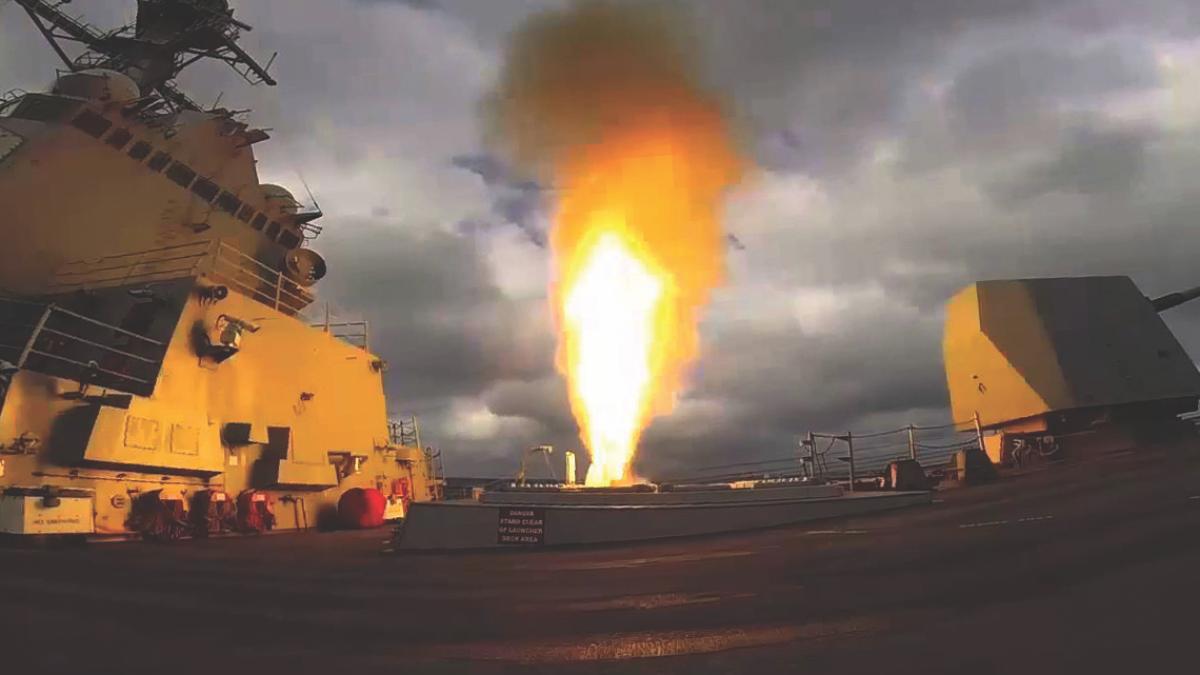Spillover from the Yemeni civil war now threatens U.S. warships on the high seas, placing the fleet in a state of alert not seen since the 1988 tanker war against Iran. While the 2000 USS Cole (DDG-67)
bombing by al-Qaeda in Yemen exposed vulnerabilities in our Navy, the attack was the exception and not the norm. Insurgents and terrorists rarely take to sea because of the immense costs involved in operating and maintaining warships. Yet 16 years after the attack on Cole, a paradigm shift has occurred. On 9 October 2016, the destroyer USS Mason (DDG-87) launched surface-to-air missiles at two Houthi antiship cruise missiles (ASCMs) fired at the guided-missile destroyer.
This was first time the U.S. Navy used the Aegis weapon system against enemy cruise missiles. In the following days, two more attacks were defended successfully, and the United States eventually answered on 13 October 2016 with land-attack cruise missile strikes against three Houthi radar stations used for targeting.
Since warships have sovereign status—on the high seas and even when a warship enters national waters (within 12 nautical miles)—under United Nations Convention on the Law of the Sea (UNCLOS) Article 95, it is widely accepted that warships are to be treated like a nation’s territory. A warship’s physical boundaries cannot be infringed, nor can other nation’s laws be applied. It follows that any attack on a U.S. ship is an attack on soveriegn U.S. territory, leaving the United States to decide whether or not to invoke collective self-defense under NATO Article 5.
Precedent exists for the United States to declare war against an insurgency in response to a naval attack. In 1801, the Barbary state of Tripoli informally declared war on the United States by cutting down the flagstaff in front of the U.S. consulate. In response, President Thomas Jefferson commissioned six frigates to patrol off Tripoli and provide protection of U.S. merchant ships traveling near the North African coast. While the United States did not declare war, Congress authorized the Navy to protect against any nautical marauding.
In 1803, the situation worsened when the frigate USS Philadelphia ran aground after she gave chase to a pirate ship, was bombarded from shore, and was captured. The Philadelphia’s capture set off two more years of conflict with the pirate state. Using the Philadelphia incident as precedent, the attack on the Mason can be viewed as an attack on U.S. territory.
Once the United States declares hostilities against an insurgency, the country can take unilateral action or it can petition its allies for support, just as NATO invoked Article 5 against al-Qaeda after the 9/11 attacks, Article 5 states “that an armed attack against one or more of them . . . shall be considered an attack against them all.” While the United States technically could invoke Article 5, the next question would be why, and what exactly would it gain from doing so?
The Houthi insurgency presents an advanced conventional weapons threat to ships off its coast and to maritime trade flowing to and from the Mediterranean Sea through the Suez Canal.Invoking Article 5 could bring international legitimacy to U.S. counterterror missions inside Yemen as well as delegitimize the Houthi rebels, which are backed by Iran. It also would serve as a deterrent against future attacks, making Houthi generals think twice before firing cruise missiles in fear that it would invite retribution and condemnation by 28 NATO members. This likely would decrease the ASCM threat and calm fears of maritime traders.
Inversely, if Article 5 is invoked, the United States must be ready for the nuclear deal with Iran to fall apart, as any denunciation of the Houthi rebels could be seen as a mark against Iran. Invoking Article 5 would require artful statecraft. If the State Department were to believe the Iran nuclear agreement would falter, then the United States could threaten Article 5 but modify its stance once the Houthis cease cruise missile attacks.
As long-range weapons proliferate among coastal insurgencies, U.S. policy makers must make difficult decisions regarding attacks on U.S. sovereign territory. Our nation’s approach to sovereign immunity and decisions to protect or forgo our legal rights will shape our ability to respond to growing insurgencies on the high seas.



